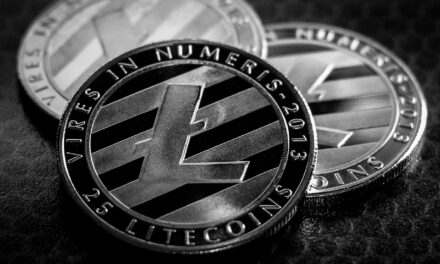Introduction
To begin, I want to extend my sincere appreciation to several experts at BingX, J and L, whose contributions have been invaluable. While their names remain undisclosed, their guidance has played a crucial role. Among the many centralized exchanges (CEXs) available, I followed the principle that choosing wisely outweighs mere effort and ultimately decided on BingX.
A quick disclaimer—this article does not provide financial advice. With that clarified, let’s dive straight into the core idea: in trading, selection is paramount.
Success in trading hinges on decision-making: selecting the right asset, identifying the ideal entry and exit points, and adjusting to market conditions. One of the primary distinctions between cryptocurrency and traditional stocks is the need for faster decision-making.
Different market conditions demand different strategies. For instance, during uncertain times, the best approach may be capital preservation. However, many traders, especially 99% of office workers, continue trading regardless of market conditions, often leading to unnecessary losses.
Ultimately, achieving financial success in trading—perhaps even earning $1 million—boils down to making informed and timely choices.
1. Prioritizing Selection: The First Step to $1 Million – Choosing Assets
Cryptocurrency spot trading can be categorized into three main types:
1. Bitcoin
2. Altcoins
3. Meme coins
Selecting the right asset is critical. Many traders fall into common traps that lead to repeated losses:
- They seek rapid wealth, dismiss Bitcoin as “too slow,” move to altcoins, then escalate to meme coins due to their extreme volatility. Eventually, they trade impulsively and lose everything.
- They follow social media hype, believing overnight success stories, only to end up in financial losses.
Studies indicate that poor asset selection leads to financial losses for over 80% of crypto traders.
Each category of cryptocurrency carries distinct risks: Bitcoin < Altcoins < Meme Coins. These risk levels are inherent and cannot be changed, making it essential for traders to evaluate their risk tolerance before making investment choices.
1.1 Understanding Your Risk Tolerance
If you have a low risk tolerance, exceeding it can trigger anxiety, poor decision-making, and ultimately, financial losses. When emotions override logic, the likelihood of making costly mistakes increases significantly.
Can you take risks beyond your comfort zone? Yes, but only when the probability of success is over 60%.
Once a trade is executed, there’s no turning back. Investors must be mentally prepared for worst-case scenarios—potentially losing all invested capital. For example, if an individual with a $1,000 risk tolerance decides to go all-in on high-risk meme coins, they must accept the possibility of complete loss rather than dream of exponential gains.
Interestingly, most traders borrow money not because they’ve exhausted their capital but because they previously experienced gains and want to amplify their profits.
1.2 Choosing the Right Asset: Bitcoin vs. Altcoins vs. Meme Coins
Each cryptocurrency category demands a different level of market knowledge and access to information. Where do you source your insights?
- If you have direct access to hedge fund managers and industry insiders, trading altcoins might be profitable.
- If your circle includes influential figures like top KOLs or high-profile entrepreneurs, you may have an edge in meme coin trading.
Why do connections matter? Because information advantage translates to financial gains.
For traders without such networks, a practical approach is allocating 80% of their portfolio to Bitcoin while relying on market analysis for decision-making.
Personally, I avoid time-consuming speculation and prefer efficiency. Instead of navigating through excessive noise on Binance Plaza, I focus on analyzing Bitcoin trends directly on bingx Bitcoin price charts, allowing me to make informed choices in minutes.
2. Prioritizing Selection: The Second Step to $1 Million – Market Timing
Since financial markets are driven by human behavior, no asset follows a guaranteed four-year cycle. The belief that Bitcoin rises predictably every four years is a misconception—accurately predicting market cycles has only a 0.06% probability.
So why does Bitcoin seem to follow a four-year rhythm? It’s not just due to halving events but rather global liquidity cycles, particularly those influenced by U.S. election-driven economic policies.
2.1 Understanding Liquidity Cycles
Market trends are shaped by capital flow, often referred to as “hot money.”
Meme coins, for instance, can experience rapid price surges when liquidity floods the market. However, history has repeatedly shown that financial crises occur when liquidity-driven market bubbles inevitably burst.
Timing market trends involves recognizing liquidity influxes and exits. For traders like me who prefer efficiency, relying on BingX’s pre-vetted coin listings helps streamline asset selection.
Even with due diligence, volatility remains a risk. Effective portfolio management—such as limiting new coin exposure to 1% of capital and using automated trading strategies—can help mitigate unexpected losses.
3. Prioritizing Selection: The Third Step to $1 Million – Position Sizing
Position sizing is an often-overlooked strategy that separates disciplined investors from reckless gamblers.
Many traders lose money because their actual decisions contradict their risk management strategies. For example, someone who carefully studies market trends might still impulsively invest their entire capital into a single high-risk asset, effectively gambling rather than investing.
Smart position sizing ensures traders can endure market downturns. A practical rule is determining how many losing trades one can afford before depletion. For instance, if a trader is willing to risk $1,000 and can sustain 100 losses, each trade should be limited to $10.
Given the inherent difficulty in predicting short-term price movements, automated solutions like Copy Trading can optimize strategies. Having tested multiple platforms, I found BingX’s Copy Trading feature superior due to its early adoption and refined trading algorithms.
Top 5 Cryptocurrency Exchanges
1. **Coinbase** – High fees but offers fast bank transactions.
2. **Binance** – Still large but facing increasing regulatory challenges.
3. **Bybit** – Strong in derivatives but lacks significant growth drivers.
4. **OKX** – High trading volume but lacks distinctive advantages.
5. **BingX** – Best platform for optimizing asset selection and timing in secondary markets.





